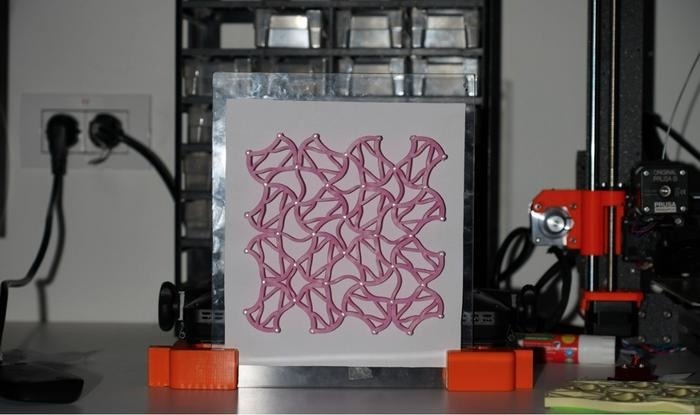Scientists at Los Alamos National Laboratory and Tel Aviv University have achieved a breakthrough in material science with the creation of “Chaco,” a revolutionary metamaterial named after the historical site Chaco Canyon in New Mexico. The study has been published in Nature Communications.
 The Mechanical Metamaterial. Image Credit: Tel Aviv University
The Mechanical Metamaterial. Image Credit: Tel Aviv University
Unlike ordinary materials, which respond uniformly to a sequence of external manipulations regardless of order, the new metamaterial displays history-dependent behavior, paving the way for exciting applications in memory storage, robotics, and even mechanical computing.
Chaviva Sirote-Katz, Dor Shohat, Dr. Carl Merrigan, Prof. Yoav Lahini, and Prof. Yair Shokef of Tel Aviv University, as well as Dr. Cristiano Nisoli of Los Alamos National Laboratory, led the research.
A metamaterial is a designed structure made up of considerably bigger building units than atoms or molecules. The spatial arrangement of these blocks determines much of the metamaterial's physical characteristics. This study focuses on a mechanical metamaterial made up of a series of flexible beams that can readily bend under compression.
To achieve unique features, the researchers created a metamaterial with inbuilt frustration, namely a geometric arrangement of the beams that prevent all beams from responding to external pressure in the same way that each beam would prefer.
This material is like a mechanical memory storage device that can remember a sequence of inputs. Each of its mechanical building blocks has two stable states, just like a single bit of memory.
Dor Shohat, PhD, Student, Tel Aviv University
The key to Chaco's memory is its unusual design, which was inspired by the notion of frustration found in magnetic systems recognized for their memory capabilities. Similar to how geometric frustration prevents magnets from achieving a simple, ordered state, Chaco’s building blocks are placed in such a manner that they cannot simply settle into an ordered, low-energy configuration.
This controlled frustration generates a wide range of potential states, a property that allows the material to remember the sequence of operations it has undergone.
By carefully designing the geometry of the material, we can control the way it responds to external forces. This allows us to create disorder and complex behaviors in a simple, ordered structure.
Chaviva Sirote-Katz, PhD, Student, Tel Aviv University
Chaco’s capacity to detect sequences of actions is due to its non-Abelian nature, which means the order of operations is important. For example, flipping two units inside the material in one sequence could result in a different final state than flipping them in the opposite order. This sensitivity to history enabled the researchers to encode information in the sequence of activities and then extract it by examining the material’s ultimate state.
Journal Reference:
Sirote-Katz, C., et al. (2024) Emergent disorder and mechanical memory in periodic metamaterials. Nature Communications. doi:10.1038/s41467-024-47780-w